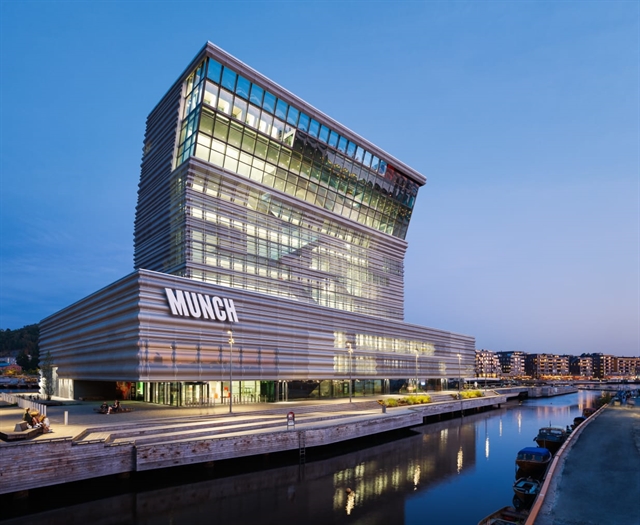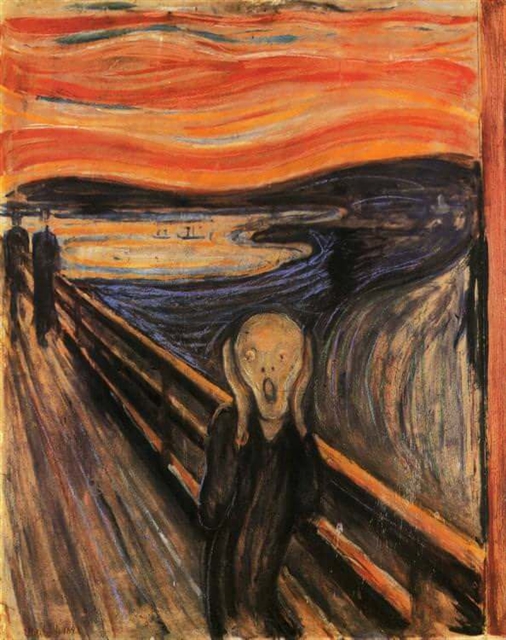 Life & Style
Life & Style

HÀ NỘI — The Norwegian embassy hosted an online press conference on Tuesday to announce the newly-built Munch museum on Oslo’s waterfront. The museum will officially open on October 22.
The museum will be home to the largest collection of works in the world by the Norwegian artist Edvard Munch, tracing Munch's profound influence on both modern art and fellow artists. Iconic artwork will be displayed permanently and temporary exhibitions will show Edvard Munch’s lasting influence on his own contemporary society, as well as today’s generation of artists.

|
| The newly-built Munch Museum in Oslo. Courtesy Photo of the embassy |
“I am very happy to bring this news to the Vietnamese audience, in the context of five decades of celebrated relations and cooperation between our two countries,” Norwegian Ambassador to Vietnam, Grete Lochen, said at the conference. “Edvard Munch has a unique position in Norwegian and international art history. He was very generous, leaving his entire estate to the City of Oslo, which includes, among other things, more than 28,000 artworks, as well as texts, letters, photographs, equipment and other personal possessions.
“Although it is emotional to say farewell to the old Munch museum at the Toyen after 58 years, everyone, including myself, cannot wait to visit the new one. I promise to share with you the pictures about my first visit to the new Munch”.
At five times the size of the original building, the new Munch Museum will allow visitors to experience the full range of Edvard Munch’s work across 13 floors. The museum boasts the world’s largest collection of Edvard Munch works, and the new structure will increase the exhibition space fourfold, with 26,313 square meters of new space to showcase highlights from the artist’s prolific career. Standing at over 57.4 meters, this new landmark places Edvard Munch, Norway’s most prominent artist, firmly at the centre of the city of Oslo.
Located on the edge of a fjord, estudio Herreros, an architecture firm from Madrid, created the new museum with the city of Oslo in mind. This new museum on the waterfront transforms the city’s skyline. The top floor opens up into an observation area, offering some of Oslo’s most spectacular views. The perforated, translucent aluminium façade reflects the changing colours and conditions of the Oslo skies. The new building has been created as a nod to Edvard Munch’s connection to the Norwegian landscape and his penchant for painting outside in all seasons.
“This is the day we have been looking forward to for so long. Now we can present what many have been waiting for, both the opening date and the exhibition shows for the first year,” Stein Olav Henrichsen, director of the museum, said. “Finally, we can show what this building will add to the city and all the exciting things we will fill the new Munch with.”
With Oslo’s setting at the core of the project, sustainability is integral to the design. The new museum has been planned in accordance with FutureBuilt, an Oslo-wide initiative to halve greenhouse gas emissions across the city. Recycled materials have been used throughout the building, and the interior spaces are designed to conserve energy, reducing the museum’s carbon footprint significantly. Ensuring that the museum is as energy efficient as possible estudio Herreros conceived a design in line with cutting-edge ethical building practices.
The new museum will be a fully accessible, offering a wide range of events and experiences for visitors of all ages. Research and conservation facilities will be accessible to the public, allowing visitors an insight into the ongoing work taking place to preserve and celebrate Edvard Munch’s legacy.
The programme of events will include concerts, literature readings, performance and art workshops, integrating the museum with the new cultural district of Bjørvika. Visitors can also enjoy a meal in the 13th-floor restaurant with views overlooking the city and fjord.
The museum's collection, the core of which Edvard Munch donated to the city of Oslo upon his death in 1944, includes over 26,700 paintings, prints, photographs, drawings and watercolours by the artist, ranging from 1873 to 1944.

|
| One of Munch's most famous works, The Scream. Photo Courtesy of Edvard Much organisation |
While Munch is best-known for The Scream, he also experimented with various media and techniques. In addition to the paintings, watercolours and woodblock prints for which he is best known, Munch bought a Kodak camera in 1902 and is recognised today as one of the first artists to experiment with self-portrait, or 'selfie', photography.
The museum’s collection also includes thousands of other items included in Edvard Munch’s original bequest to the city, such as his printing plates and lithographic stones, as well as thousands of letters and approximately 10,000 objects from his own personal belongings.
As well as allowing for greater opportunities to showcase Edvard Munch’s artworks, the new museum will also host temporary exhibitions by both Norwegian and international artists, exploring Munch’s enduring influence on the generations of artists that have followed.
In the late 20th century, he played a great role in German expressionism and the art form that later followed; namely because of the strong mental anguish that was displayed in many of the pieces that he created. VNS